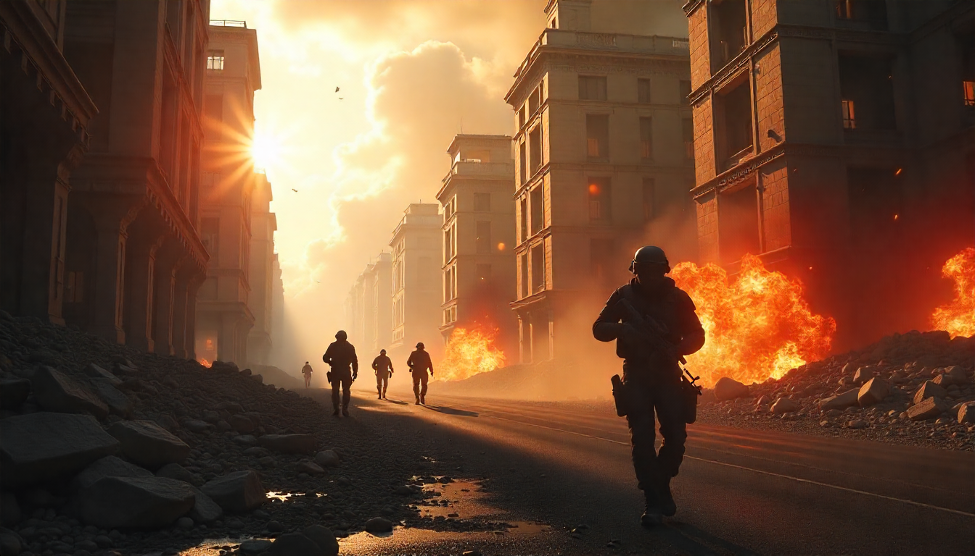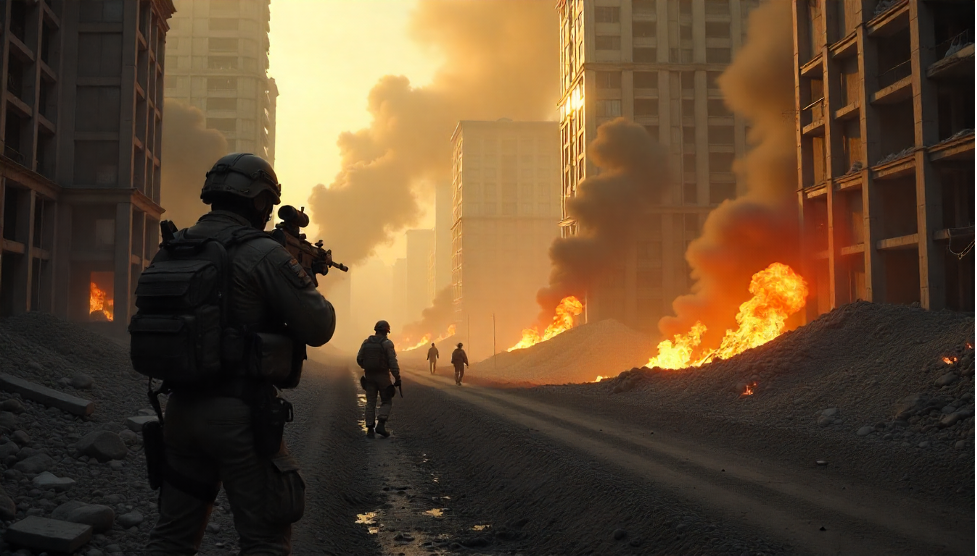Battlefield 6 - Complete Guide to Career Rank, Weapons, Tactics and Tips for Correct Gameplay
Summer 2025 gave players the opportunity to play the new part of the cult shooter Battlefield 6 and despite the fact that this is a beta test, players were absolutely delighted due to the classic action and unique destruction system. Now players can play and increase BF6 career rank in a fully cinematic format, where everything burns, explodes, is destroyed to a brick and battles are constantly taking place around.
Despite the fact that the full release is planned for the fall, many players are already trying new maps and progressing in their rank, honing their shooting and team play skills.
In this article, we will analyze:
● How BF6 Career Rank works and why it is an important indicator.
● How to develop it most quickly.
● Which weapon is more profitable to use.
● Players' opinions on the state of Battlefield 6.

What's New in the Battlefield 6 Beta
Almost immediately, the developers added the Custom Search function - a tool that allows you to filter game maps and modes to suit your preferences. This is an important innovation, especially for those who are already engaged in cheap BF6 career rank, testing all types of weapons, or practicing tactics for large squads.
For example, if you want to quickly improve an assault rifle, then you should choose game maps with long corridors and open spaces where you can realize its best sides. Or, on the contrary, you only want close combat, then set the Domination or King of the Hill modes.
Modes Available in the Beta
● Conquest - large-scale battles for control over key points on the game map.
● Rush - a fast mode with an attack or defense of stations, where you can quickly and dynamically improve Battlefield 6 Career Rank for sale.
● Breakthrough - a full-fledged advancement through sectors where well-coordinated and thoughtful teamwork is needed.
● Domination - more compact maps, fast pace and complete lack of vehicles.
● King of the Hill - a battle for one game zone, where victory depends on whether you can hold it for a long time.
● Squad Deathmatch - team battles in small squads.
● All-Out Warfare - a large-scale battle with vehicles and infantry.
Battlefield 6 Career Rank, Progression System and Its Meaning
Your BF6 career rank is not just a number in your game profile, but a full-fledged indicator of your overall experience and skill. Everything is taken into account - victories, defeats, helping other players, completing tasks and personal effectiveness in matches.
Why Do You Need a Career Rank
● Unlocking new content - weapons, gadgets, cosmetic items are tied to a certain level that you need to conquer.
● Community status - a high level indicates your skill level, a high level selects similarly experienced gamers against you.
● Motivation - the rank system itself motivates you to improve your gaming skills and rewards you for it.
How the System Works in Beta
● Levels 1–50 - progress is linear. Victories and useful actions are guaranteed to bring you Battlefield 6 career boost for sale.
● Level 50 - new rank, Colonel 1, which means reaching the current level.
● 50+ levels - the Promotions and Prestige system will be added at release, which will allow you to reset your progress for unique rewards.
Career Rank in Battlefield 6 Beta
| Career Rank | Note |
|---|---|
| 1–50 | Basic leveling: XP for battles, assistance, tasks |
| 50 | Colonel 1 — maximum in beta |
| 50+ | Prestige system expected in release |
How to Quickly Develop BF6 Career Rank
- Choosing the best modes - the best sources of experience will be Conquest and Breakthrough. They provide many variations for completing tasks and allow you to interact with equipment.
- Actively completing tasks - all tasks available per day can give 10-15% of the total cheap Battlefield 6 career rank in one match. Weekly missions are also a large source of XP bonuses.
- The role of classes - everyone will be effective. Assault - close combat and quick capture of points. Engineer - destroys equipment and shelters. Support - supports with ammunition and medicine. Recon - scout and the main weapon against important enemies.
- Team play - for all team actions you will receive an additional reward, so put markers, help, heal, repair.
- Using top weapons - do not be afraid to use S-Tier, this will speed up your progress.
The Best Weapons of Battlefield 6 Beta
| Tier | Weapons |
|---|---|
| S | M87A1 (Shotgun), NVO-228E (AR), PW7A2 (SMG), M2010 ESR (Sniper) |
| A | M4A1, AK-205, SGX (SMG), L110 (LMG), M39 EMR (DMR) |
| B | B36A4 (AR), M433, KTS100, MK8, SVK-8.6, M417 A2 | |
| C | P18 (Pistol) |
Why S-Tier is strong:
- M87A1 - dominates in closed spaces and close combat.
- NVO-228E - versatile, suitable for most game situations.
- PW7A2 - the best option for aggressive play.
- M2010 ESR - the choice for snipers and players who focus on accuracy.
Players Opinions on the Beta
Players on Reddit and EA forums actively share their impressions of the game and the BF6 career rank system.
Pros:
● Innovative destructibility.
● Dynamics and pace of combat.
● New movement system.
Cons:
● Autospotting - many enemies are visible even without direct contact with them.
● Weak suppression - there is no dense fire system like in realistic shooters that allow you to hold back enemies.
● Fast HP regeneration - Support classes are valuable, but not mandatory.

Conclusion
Battlefield 6 is clearly becoming a good foundation for success and the return of the spirit of the 3rd and 4th parts, which were very popular not only due to the companies, but also a full-fledged multiplayer. The developers have made a serious step forward in terms of destruction and attention to detail.
The new career rank system is already captivating players and motivating them to open new skins and gameplay opportunities. You can progress solo, play in a squad, or buy BF6 career rank. You will find the best deals on the Skycoach.gg, where players can get a boost, training, or various game currencies that professionals farm and help other gamers.
So you will be ready for the release and start the new season prepared and trained.
FAQ
What Does Career Rank Give?
Opens up new weapons, gadgets, cosmetic items and displays the level of experience.
What Is the Maximum in the Beta?
Level 50 - Colonel 1.
Is There Prestige?
No, but it will be in the release.
Best Weapon?
M87A1, NVO-228E, PW7A2, M2010 ESR. It all depends on your playstyle.
What's New in Beta Weekend 2?
Custom Search and expanded playlists.
Dice, Dungeons, Games & More - Eternity TTRPG
Share This Article

Author - Jacob Tegtman
Dear reader, I hope you enjoyed this article. Tabletop gaming has been a passion of mine since I was 6 years old. I've played just about every game from Dungeons and Dragons to video games like Final Fantasy. These games have inspired me, made me laugh, made me cry, and brought me endless hours of enjoyment.
I started Eternity TTRPG - and the indie tabletop game that goes along with it (Eternity Shop) - to share my love of gaming with others. I believe that in our technology-driven age, tabletop games help bring a sense of magic and community back into our world.
If you love the site, please share it with others! I have lots of gaming-related material for you to peruse and use in your own gaming sessions. If you have any questions about the site or want to contribute, just send me a message using the "Contact" page, which you can find in the site's footer.










